GES263 Effra Combined Sewer Overflow (CSO), London
One of London's 'Lost Rivers', The River Effra (from Celtic meaning 'Torrent') flows from Crystal Palace via Norwood (beneath the Cemetery) to Dulwich through Brixton and on to Kennington before hitting the River Thames near Vauxhall Bridge. Like most of the other rivers in London, it was used as a sewer, the upper branches were used as such in the 17th Century, long before the Big Stink and Joseph Bazelgette's scheme. The river was navigable up to Brixton, and Elizabeth I is reputed to have sailed to see Sir Walter Raleigh at his Brixton home. With the Big Stink, building of the Embankment and sewer plans of Bazelgette in the mid 19th Century, the rest of the Effra was covered over and culverted. The Effra River from Brixton is diverted into an Interceptor at Stockwell, the River's course still remains, but has been made into a storm relief (The Brixton Storm Relief) that has an outfall at the River Thames.
This is the start of the Effra, from the bottom of the map to the top, it flows South to North where it meets the Thames. As can be seen, the river runs into an interceptor (Brown line) and disappears. The Effra loves to flood (justifying it's naming as 'torrent'), hence the presence of the SW Storm Relief to alleviate this.
This map shows the main section of the Effra that is traversable.

I managed to find a manhole near where the Effra sewer re-starts in Dulwich (1). It appears to be an overflow from an interceptor. On climbing down to a tunnel, it ended in a 3ft high egg tunnel with a tiny trickle of a stream. i couldn't squeeze down, and equally couldn't see anything that looked like the start of the Effra sewer. We tried a few more manholes along the way, but few gave us what we wanted or it wasn't possible to get in due to it being too small. When we finally managed to get in, and found a walkable 6ft barrel pipe to walk down near Brockwell Park. A yellow brick pipe with a fast flowing current awaited.
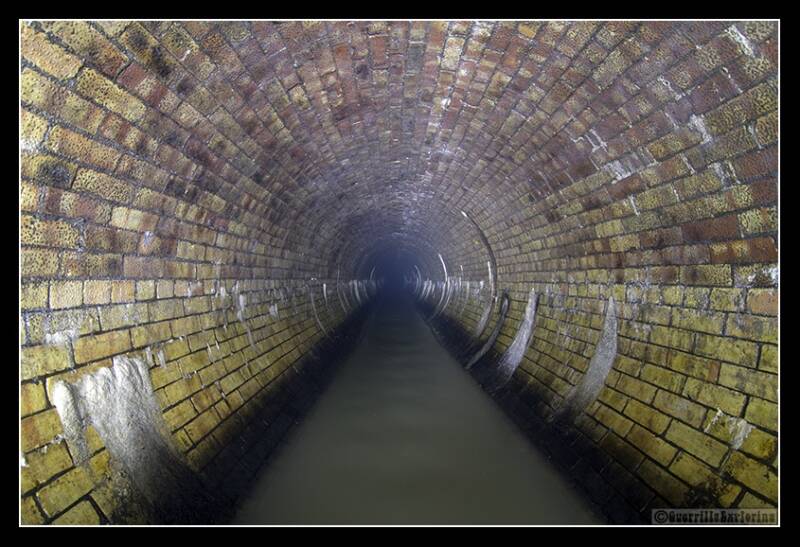
A couple of hundred metres later, and we came to a fairly new overflow chamber (2) made from concrete. It was probably built in the mid 1980s, when the area was hit by severe flooding.

A flow sensor hangs from the ceiling.

A tunnel passes under the main flow above, the upper tunnel opening seen above is where the previous photo was taken from.
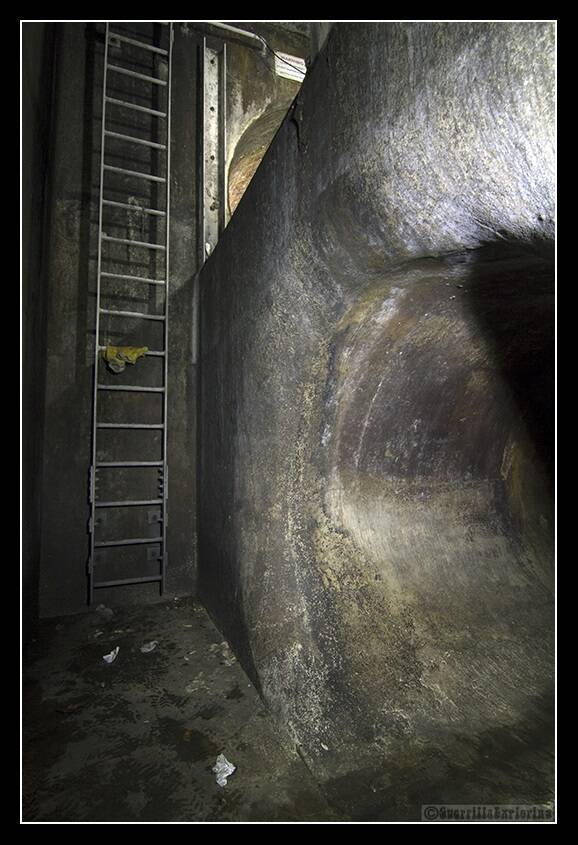
The dry tunnel under the main flow ended with a sharp drop and a mystery tunnel that somehow would have ferried away the water in a flood situation.

Pushing further on, and not much further down the Effra, we came to the overflow junction with the South West Storm Relief (3). A fast flowing side pipe enters the flow just before the chamber. Making walking through the flow a little challenging. Another flow sensor sits above the exit pipe from the chamber.
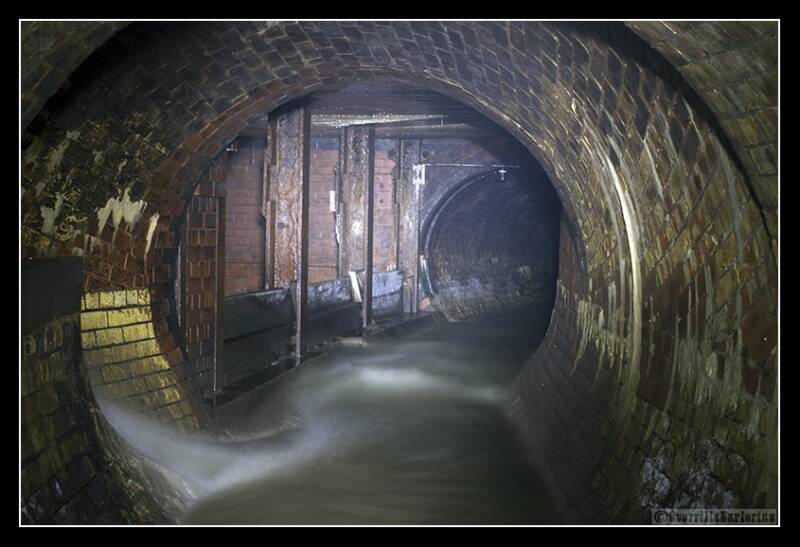
As a sizeable overflow chamber, it had an exit ladder. The overflow chamber was built after the original bricking in of the Effra, hence the merging of brick walls and concrete ceiling here. Images from the SW Storm Relief will appear eventually in a write-up about that drain.
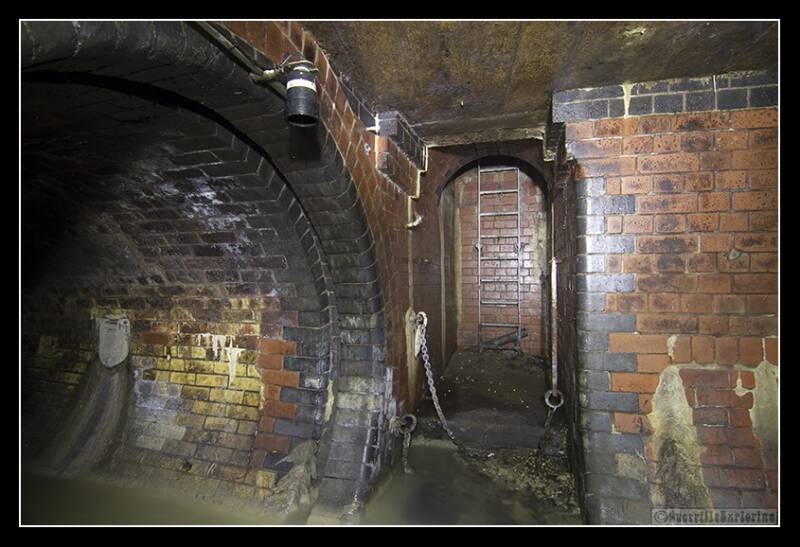
From the SW Storm Relief overflow chamber, it was a good mile to a mile and a half of hard slog with no exit points. We passed below the Ritzy Cinema junction in Brixton at one point, spookily being below people waiting to cross the lights. They were oblivious to the fact we were there. We stopped several times on the long march, I'd worn too much clothing and was heating up a bit. I wanted to push on, as I don't like being far from an exit point.
Eventually we emerged into a larger semi-circular tunnel, where the Effra has a large side pipe enter (4). I started to walk down the tunnel on the left, but the air wasn't good, and I turned back.
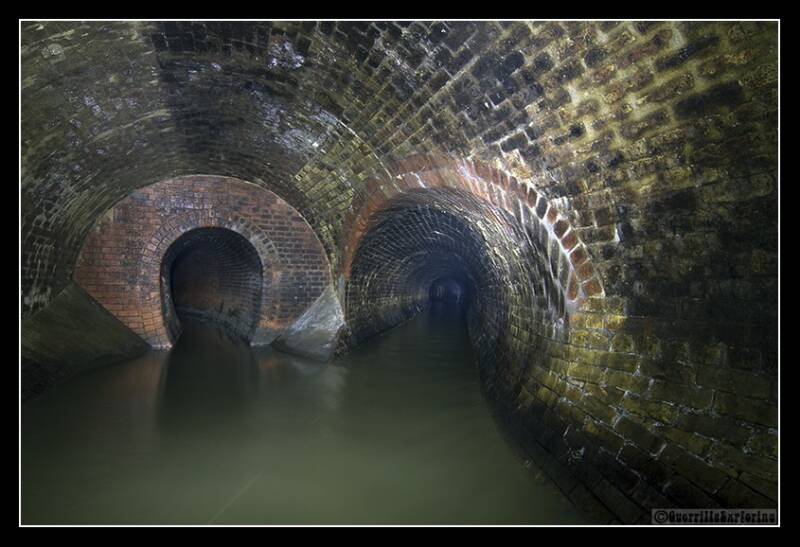
Adders stands in the tunnel we're following up to Stockwell. It's possible this may have been the original course of the River Effra.
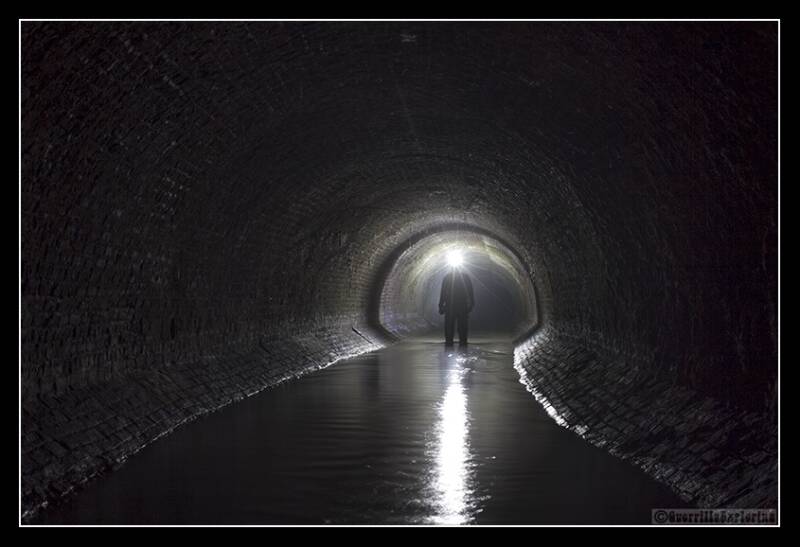
Passing under trees, that are seeking moisture from the sewer. With the mould on the sides and banks, it looks almost Wintery. The lighter brick arch in the centre of the photo may have been a bridge over the River, now incorporated into the sewer.
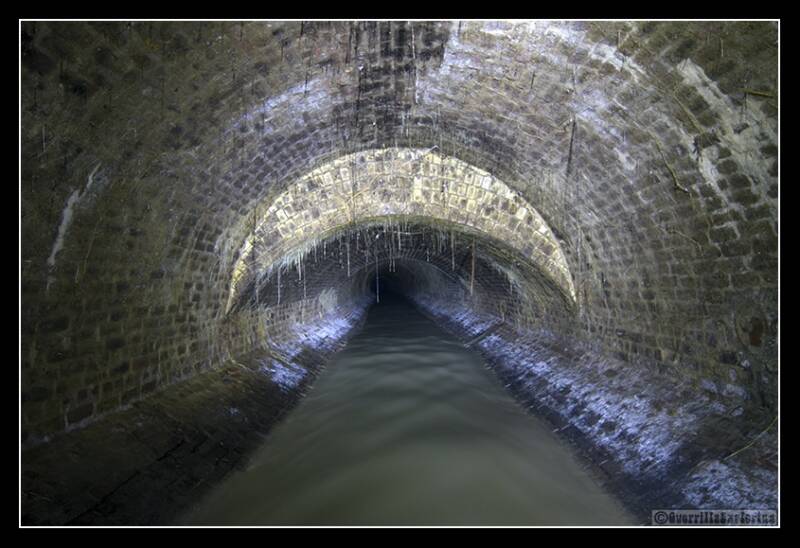
More tree routes poke through as we passed through a long section which seemed like something out of a Tim Burton film.

Eventually we reached the end of the Effra sewer (5). The depth of sewer increased quickly, and breaching became a concern. This is where the Brixton Storm Relief starts, continuing down the path of the former River Effra. The two tunnels on the left are the Brixton Storm Relief. The tunnel on the right is where the Effra sewer goes to merge into an interceptor.

Into the gloom, the tunnel on the right is where the Effra sewer flows around an S bend to the left, and falls into an interceptor. Adders tried to walk down, but the depth of the flow risked breaching his waist waders! On the far wall of the interceptor can be seen an insert up to halfway up the wall. This is where a weir would have been at one point. The tunnel on the left carries an interceptor through the storm relief, the High Level Sewer No.1, which the Effra flows into around the corner.
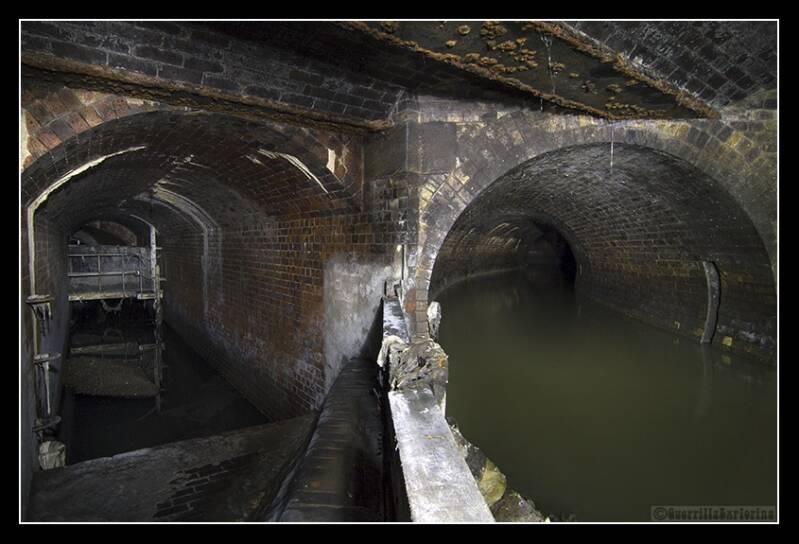
The far left tunnel, that is part of the split tunnels between the Effra sewer and the Brixton Storm Relief. The baby wipe encrusted High Level Sewer No. 1 (Interceptor) flowing through. The dark grey arch of a pipe in the far background is the start of the Brixton Storm Relief that heads to the River Thames.
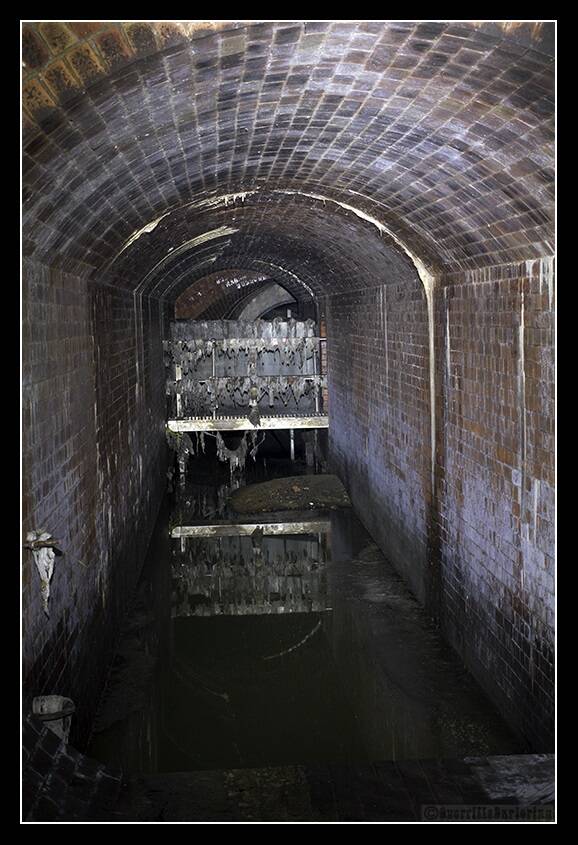
Tired and exhausted, we exited into the welcoming night air. Thanks to partner in slime, Adders.
Add comment
Comments